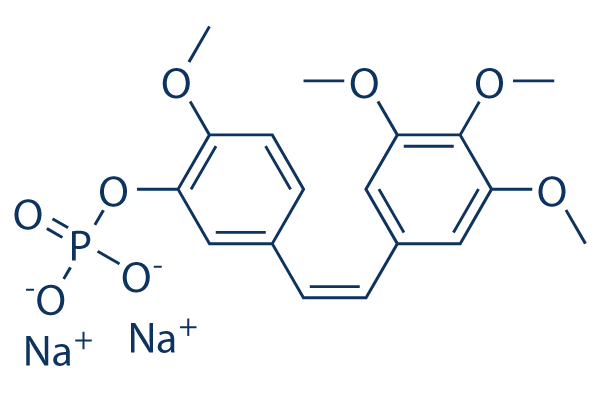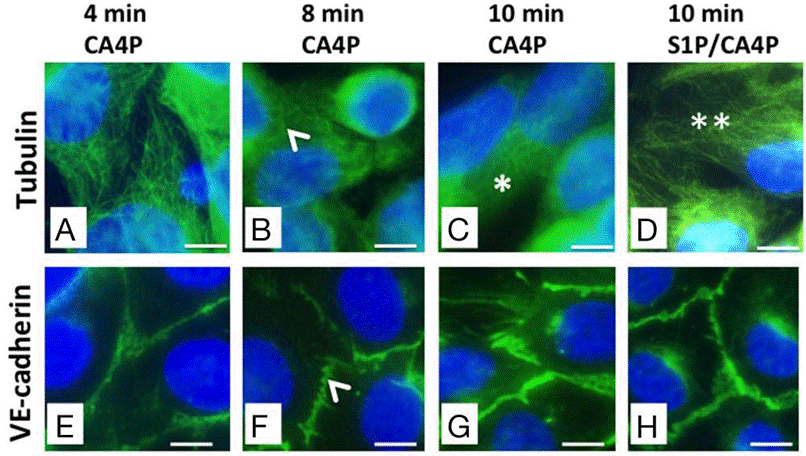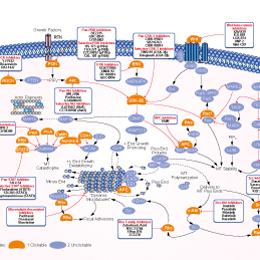
- Bioactive Compounds
- By Signaling Pathways
- PI3K/Akt/mTOR
- Epigenetics
- Methylation
- Immunology & Inflammation
- Protein Tyrosine Kinase
- Angiogenesis
- Apoptosis
- Autophagy
- ER stress & UPR
- JAK/STAT
- MAPK
- Cytoskeletal Signaling
- Cell Cycle
- TGF-beta/Smad
- DNA Damage/DNA Repair
- Compound Libraries
- Popular Compound Libraries
- Customize Library
- Clinical and FDA-approved Related
- Bioactive Compound Libraries
- Inhibitor Related
- Natural Product Related
- Metabolism Related
- Cell Death Related
- By Signaling Pathway
- By Disease
- Anti-infection and Antiviral Related
- Neuronal and Immunology Related
- Fragment and Covalent Related
- FDA-approved Drug Library
- FDA-approved & Passed Phase I Drug Library
- Preclinical/Clinical Compound Library
- Bioactive Compound Library-I
- Bioactive Compound Library-Ⅱ
- Kinase Inhibitor Library
- Express-Pick Library
- Natural Product Library
- Human Endogenous Metabolite Compound Library
- Alkaloid Compound LibraryNew
- Angiogenesis Related compound Library
- Anti-Aging Compound Library
- Anti-alzheimer Disease Compound Library
- Antibiotics compound Library
- Anti-cancer Compound Library
- Anti-cancer Compound Library-Ⅱ
- Anti-cancer Metabolism Compound Library
- Anti-Cardiovascular Disease Compound Library
- Anti-diabetic Compound Library
- Anti-infection Compound Library
- Antioxidant Compound Library
- Anti-parasitic Compound Library
- Antiviral Compound Library
- Apoptosis Compound Library
- Autophagy Compound Library
- Calcium Channel Blocker LibraryNew
- Cambridge Cancer Compound Library
- Carbohydrate Metabolism Compound LibraryNew
- Cell Cycle compound library
- CNS-Penetrant Compound Library
- Covalent Inhibitor Library
- Cytokine Inhibitor LibraryNew
- Cytoskeletal Signaling Pathway Compound Library
- DNA Damage/DNA Repair compound Library
- Drug-like Compound Library
- Endoplasmic Reticulum Stress Compound Library
- Epigenetics Compound Library
- Exosome Secretion Related Compound LibraryNew
- FDA-approved Anticancer Drug LibraryNew
- Ferroptosis Compound Library
- Flavonoid Compound Library
- Fragment Library
- Glutamine Metabolism Compound Library
- Glycolysis Compound Library
- GPCR Compound Library
- Gut Microbial Metabolite Library
- HIF-1 Signaling Pathway Compound Library
- Highly Selective Inhibitor Library
- Histone modification compound library
- HTS Library for Drug Discovery
- Human Hormone Related Compound LibraryNew
- Human Transcription Factor Compound LibraryNew
- Immunology/Inflammation Compound Library
- Inhibitor Library
- Ion Channel Ligand Library
- JAK/STAT compound library
- Lipid Metabolism Compound LibraryNew
- Macrocyclic Compound Library
- MAPK Inhibitor Library
- Medicine Food Homology Compound Library
- Metabolism Compound Library
- Methylation Compound Library
- Mouse Metabolite Compound LibraryNew
- Natural Organic Compound Library
- Neuronal Signaling Compound Library
- NF-κB Signaling Compound Library
- Nucleoside Analogue Library
- Obesity Compound Library
- Oxidative Stress Compound LibraryNew
- Plant Extract Library
- Phenotypic Screening Library
- PI3K/Akt Inhibitor Library
- Protease Inhibitor Library
- Protein-protein Interaction Inhibitor Library
- Pyroptosis Compound Library
- Small Molecule Immuno-Oncology Compound Library
- Mitochondria-Targeted Compound LibraryNew
- Stem Cell Differentiation Compound LibraryNew
- Stem Cell Signaling Compound Library
- Natural Phenol Compound LibraryNew
- Natural Terpenoid Compound LibraryNew
- TGF-beta/Smad compound library
- Traditional Chinese Medicine Library
- Tyrosine Kinase Inhibitor Library
- Ubiquitination Compound Library
-
Cherry Picking
You can personalize your library with chemicals from within Selleck's inventory. Build the right library for your research endeavors by choosing from compounds in all of our available libraries.
Please contact us at info@selleckchem.com to customize your library.
You could select:
- Antibodies
- Bioreagents
- qPCR
- 2x SYBR Green qPCR Master Mix
- 2x SYBR Green qPCR Master Mix(Low ROX)
- 2x SYBR Green qPCR Master Mix(High ROX)
- Protein Assay
- Protein A/G Magnetic Beads for IP
- Anti-Flag magnetic beads
- Anti-Flag Affinity Gel
- Anti-Myc magnetic beads
- Anti-HA magnetic beads
- Poly DYKDDDDK Tag Peptide lyophilized powder
- Protease Inhibitor Cocktail
- Protease Inhibitor Cocktail (EDTA-Free, 100X in DMSO)
- Phosphatase Inhibitor Cocktail (2 Tubes, 100X)
- Cell Biology
- Cell Counting Kit-8 (CCK-8)
- Animal Experiment
- Mouse Direct PCR Kit (For Genotyping)
- New Products
- Contact Us
research use only
Fosbretabulin (Combretastatin A4 Phosphate) Disodium Microtubule Associated inhibitor
Fosbretabulin (Combretastatin A4 Phosphate) Disodium is the water-soluble prodrug of Combretastatin A4 (CA4), which is a microtubule-targeting agent that binds β-tubulin with Kd of 0.4 μM in a cell-free assay. Fosbretabulin Disodium inhibits the polymerization of tubulin with IC50 of 2.4 μM, and also disrupts tumor vasculature. Fosbretabulin disodium induces mitotic arrest and apoptosis in endothelial cells. Phase 3.

Chemical Structure
Molecular Weight: 440.29
Purity & Quality Control
Batch:
Purity:
99.86%
99.86
Related Products
Signaling Pathway
Cell Culture and Working Concentration
| Cell Lines | Assay Type | Concentration | Incubation Time | Formulation | Activity Description | PMID |
|---|---|---|---|---|---|---|
| SKOV3 cells | Proliferation assay | Antiproliferative activity against human SKOV3 cells by sulforhodamine B assay, IC50=0.0045 μM | ||||
| HeLa cells | Proliferation assay | Antiproliferative activity against human HeLa cells by sulforhodamine B assay, IC50=0.0047 μM | ||||
| rat A10 cells | Function assay | Inhibition of microtubule depolymerization in rat A10 cells assessed as reorganization of interphase microtubule network by indirect immunofluorescence technique, EC50=0.007 μM | ||||
| Click to View More Cell Line Experimental Data | ||||||
Mechanism of Action
| Features | Best for advanced solid tumors, anaplastic thyroid cancer, & choroidal neovascularization. | ||
|---|---|---|---|
| Targets |
|
In vitro |
||||
| In vitro | Fosbretabulin disodium (Combretastatin A-4 phosphate disodium, CA4P disodium) is the water-soluble prodrug of combretastatin A4 (CA4), which is originally isolated from African tree Combretum caffrum. CA4 is cytotoxic towards proliferating but not quiescent endothelial cells, has potent and selective toxicity towards tumor vasculature. [2] CA4P (1 mM, 30 minutes) disrupts the endothelial microtubule cytoskeleton and mediates changes in endothelial cell morphology. CA4P stimulates actin stress fiber formation and membrane blebbing and increases monolayer permeability via Rho/Rho-kinase. [3] CA4P increases endothelial cell permeability, while inhibiting endothelial cell migration and capillary tube formation predominantly through disruption of VE-cadherin/β-catenin/Akt signaling pathway, thereby leading to rapid vascular collapse and tumor necrosis. [4] |
|||
|---|---|---|---|---|
| Kinase Assay | Tubulin assembly-disassembly | |||
| The assembly of microtubules from isolated tubulin is carried out spectrophotometrically at 350 nm and utilises the increase in turbidity which is associated with microtubule formation. Assembly is initiated by temperature increase from 10 to 35 °C. The effect of drugs on the increase in light absorption is carried. Drugs are dissolved in DMSO (<4%), which does not affect control assembly | ||||
| Cell Research | Cell lines | HUVECs | ||
| Concentrations | ~50 nM | |||
| Incubation Time | 12-48 h | |||
| Method | For the proliferation assay, the minimal concentration of FBS (1%) diluted in X-VIVO medium is used to allow sufficient viability of endothelial cells. After detachment, the cells are seeded at a concentration of 2×104 HUVECs in each well of 24-well plates, allowed to adhere overnight, and then incubated with or without cytokines (5 ng/ml FGF-2 or 5 ng/ml VEGF-A). CA4P is added at 0 – 50 nM. After incubation for 12, 24, 36, and 48 hours, cells are detached by trypsin/EDTA and manually counted using trypan blue exclusion. |
|||
| Experimental Result Images | Methods | Biomarkers | Images | PMID |
| Immunofluorescence | tubulin / VE-cadherin Actin / N-cadherin / CD31 |

|
29221156 | |
In Vivo |
||
| In vivo | CA4P causes rapid, extensive and irreversible vascular shutdown in experimental tumor models following the administration of a single dose at 10% of the maximum tolerated dose (MTD). CA4P causes a 93% reduction in vascular volume 6 h following drug administration. [2] CA4P(100 mg/kg, 6 h following administration) reduces tumor blood by approximately 100-fold, compared with approximately 7-fold in the spleen. [5] |
|
|---|---|---|
| Animal Research | Animal Models | BD9 rats implanted with tumor |
| Dosages | 100 mg/kg, 3 ml/kg | |
| Administration | i.p. | |
| NCT Number | Recruitment | Conditions | Sponsor/Collaborators | Start Date | Phases |
|---|---|---|---|---|---|
| NCT02641639 | Terminated | Platinum Resistant Ovarian Cancer |
Mateon Therapeutics |
June 2016 | Phase 2|Phase 3 |
| NCT02055690 | Terminated | Ovarian Neoplasms|Neoplasms Ovarian|Ovarian Cancer |
The Christie NHS Foundation Trust|Novartis|Mateon Therapeutics|East and North Hertfordshire NHS Trust |
September 2014 | Phase 1|Phase 2 |
| NCT01023295 | Completed | Polypoidal Choroidal Vasculopathy |
Mateon Therapeutics |
July 2009 | Phase 2 |
References |
|
Chemical Information
| Molecular Weight | 440.29 | Formula | C18H19O8P.2Na |
| CAS No. | 168555-66-6 | SDF | Download SDF |
| Synonyms | CA 4DP | ||
| Smiles | COC1=C(C=C(C=C1)C=CC2=CC(=C(C(=C2)OC)OC)OC)OP(=O)([O-])[O-].[Na+].[Na+] | ||
Storage and Stability
| Storage (From the date of receipt) | |||
|
In vitro |
Water : 28 mg/mL DMSO : Insoluble ( Moisture-absorbing DMSO reduces solubility. Please use fresh DMSO.) Ethanol : Insoluble |
Molecular Weight Calculator |
|
In vivo Add solvents to the product individually and in order. |
In vivo Formulation Calculator |
|||||
Preparing Stock Solutions
Molarity Calculator
In vivo Formulation Calculator (Clear solution)
Step 1: Enter information below (Recommended: An additional animal making an allowance for loss during the experiment)
mg/kg
g
μL
Step 2: Enter the in vivo formulation (This is only the calculator, not formulation. Please contact us first if there is no in vivo formulation at the solubility Section.)
% DMSO
%
% Tween 80
% ddH2O
%DMSO
%
Calculation results:
Working concentration: mg/ml;
Method for preparing DMSO master liquid: mg drug pre-dissolved in μL DMSO ( Master liquid concentration mg/mL, Please contact us first if the concentration exceeds the DMSO solubility of the batch of drug. )
Method for preparing in vivo formulation: Take μL DMSO master liquid, next addμL PEG300, mix and clarify, next addμL Tween 80, mix and clarify, next add μL ddH2O, mix and clarify.
Method for preparing in vivo formulation: Take μL DMSO master liquid, next add μL Corn oil, mix and clarify.
Note: 1. Please make sure the liquid is clear before adding the next solvent.
2. Be sure to add the solvent(s) in order. You must ensure that the solution obtained, in the previous addition, is a clear solution before proceeding to add the next solvent. Physical methods such
as vortex, ultrasound or hot water bath can be used to aid dissolving.
Tech Support
Answers to questions you may have can be found in the inhibitor handling instructions. Topics include how to prepare stock solutions, how to store inhibitors, and issues that need special attention for cell-based assays and animal experiments.
Tel: +1-832-582-8158 Ext:3
If you have any other enquiries, please leave a message.
* Indicates a Required Field






































